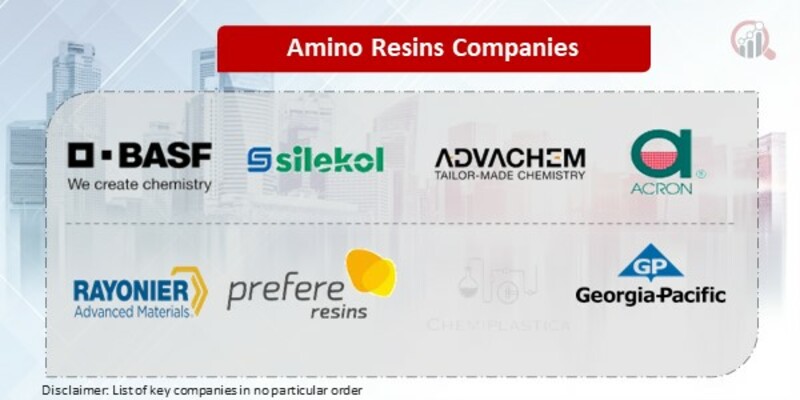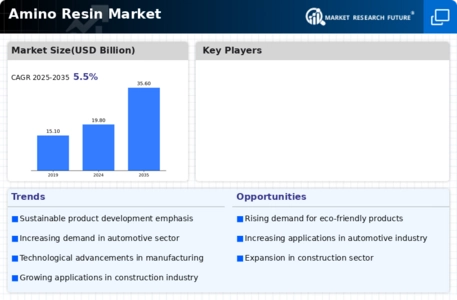Top Industry Leaders in the Amino Resins Market

Amino Resin Market
Amino resins, those versatile molecular bridges, bind more than just wood particles. They hold together the dynamic global market, where manufacturers vie for a share in shaping diverse materials from plywood to adhesives and coatings. Let's delve into the strategies, factors, and developments dictating the flow of this ever-evolving landscape.
Strategies Bonding Market Share:
-
Product Diversification: Leading players like Hexion and BASF are expanding their portfolios beyond traditional urea-formaldehyde resins to include melamine-formaldehyde and melamine urea-formaldehyde variants, catering to specific performance and environmental needs. -
Sustainability Focus: Green adhesives are finding their stick. Companies like Georgia-Pacific Chemicals are investing in bio-based amino resins derived from renewable resources like lignin and soy protein, aligning with eco-conscious consumers and regulations. -
Technological Innovation: R&D sparks new bonds. Dynea AS is pioneering low-emission amino resin formulations that minimize formaldehyde release, addressing environmental concerns and meeting stringent regulations. -
Regional Expansion: Asia-Pacific, with its booming furniture and construction sectors, holds immense potential. Companies like China National Building Materials Group are setting up production facilities in this region to capitalize on the local demand. -
Strategic Partnerships: Collaboration strengthens the chain. For instance, Huntsman Corporation partnered with a leading furniture manufacturer to develop customized amino resin adhesives for high-performance and environmentally friendly furniture production.
Factors Dictating Market Share:
-
Performance Prowess: Superior formaldehyde emission control, bonding strength, and heat resistance are crucial selling points. Established brands like Eastman Chemical have built reputations for reliable performance, attracting loyal customers. -
Cost-Effectiveness: Price remains a critical factor, particularly in mature markets. Chinese manufacturers often offer lower prices, challenging established players to optimize production and pricing strategies while maintaining quality. -
Regulatory Landscape: Stringent regulations on formaldehyde emissions and volatile organic compounds (VOCs) dictate industry practices. Players who comply with these regulations, like Borregaard AMSA with its formaldehyde-free amino resins, gain a competitive edge. -
Application Diversity: Catering to diverse industries offers resilience. Companies with broad product portfolios like AkzoNobel benefit from diversification, mitigating risks in saturated segments.
Key Players:
- BASF SE (Germany)
- Silekol sp. z o.o. (Poland)
- Advachem S.A (Belgium)
- Acron (Russia)
- Rayonier Advanced Materials. (U.S.)
- Ineos Melamines Gmbh (Germany)
- Chemiplastica Spa (Italy)
- Georgia-Pacific LLC (U.S.)
- Jiangsu Sanmu Group Co. Ltd. (China)
- Hexion (U.S.)
Recent Developments:
-
July 2023: Hexion unveils a novel melamine-urea-formaldehyde resin with superior heat resistance and water-repellent properties, catering to high-performance applications like boat building. -
August 2023: BASF partners with a research institute to develop bio-based amino resins from sustainably sourced lignin, minimizing reliance on fossil fuels and expanding feedstock options. -
September 2023: Georgia-Pacific Chemicals successfully scales up its production capacity for soy-based amino resins, positioning itself as a leader in the sustainable adhesives market. -
October 2023: China National Building Materials Group collaborates with a leading construction company to develop customized amino resin adhesives for prefabricated buildings, aiming for faster and more sustainable construction methods.









